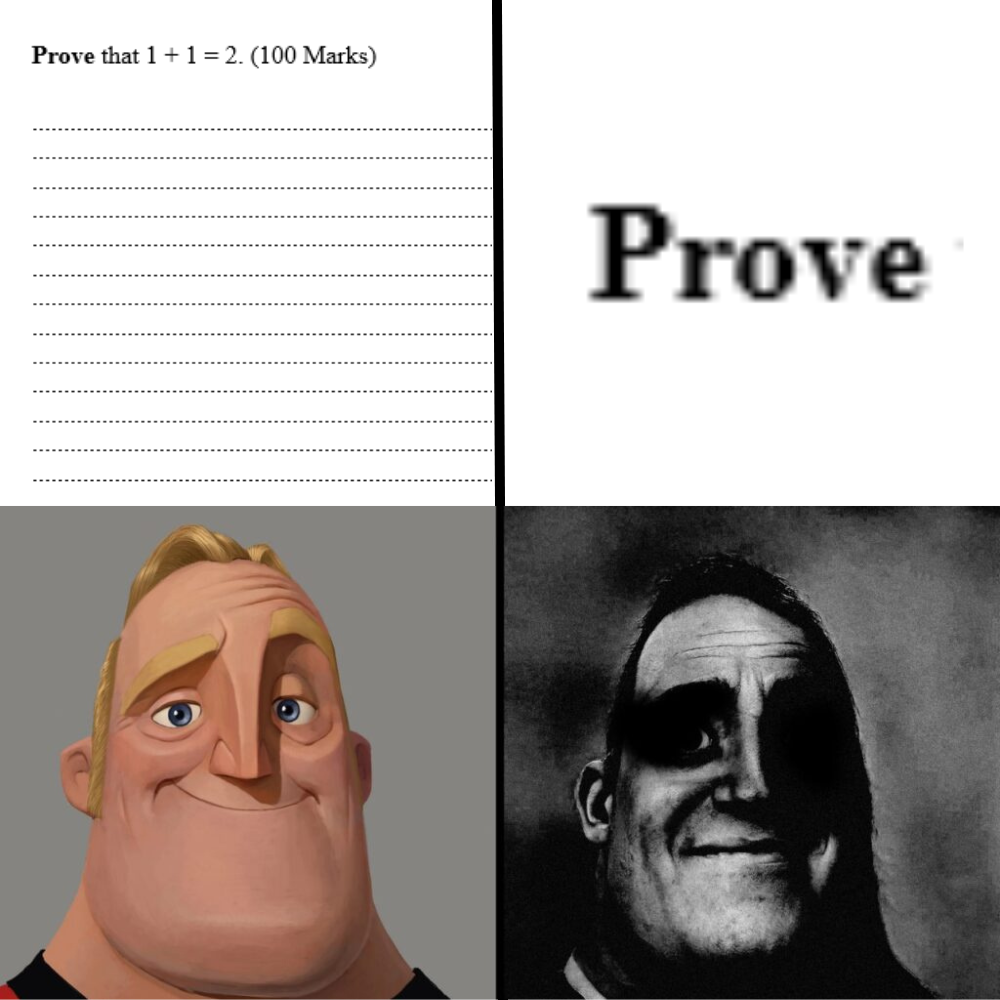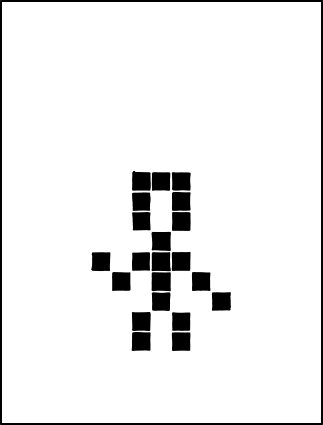$\newcommand{\sur}[2]{\langle\, #1 \, \mid \, #2 \, \rangle}$ $\newcommand{\surs}[2]{\langle\, {#1} \, \mid \, {#2} \, \rangle}$
A few days ago, I was chatting with a friend about some math. We were both bored and had a severe itch to discover something new. They sent me a meme 1 which challenged the reader to try proving $1+1=2$. That can’t be hard can it? We both knew of the infamous Whitehead & Russell proof 2 which took 162 pages to prove this seemingly self-explanatory proposition, but surely there was an easier way to do it… right?
Well, I set out to find this way, if it even existed. And honestly, I’m grateful I did, because I discovered something so much more interesting. The Surreal Numbers.
Conway, Knuth, and Affairs in Hotels
I found out that John Conway, an English mathematician who also created the Conway Game of Life 3had come up with 2 simple rules which give birth to all the numbers we know of and more.
I decided to look into it and found out about Donald Knuth’s 4 book Surreal Numbers: How Two Ex-students Turned on to Pure Mathematics and Found Total Happiness : a Mathematical Novelette.
He claims to have wrote it on a Hotel getaway with his wife 5 after meeting Conway, who described to him the rules and nuances of The Surreals. Conway says he wrote the vital parts on a tissue and then reconstructed them, over the course of 7 days, in his hotel. He published his work as a novella afterwards.
The book is beautifully written as a dialogue between two characters who discover a tablet containing inscriptions about Conway’s rules for the Surreals. They then reconstruct the surreals– just as Knuth himself does– and discover their properties in a very natural, authentic way. I could not recommend it more! 6
This blog post will follow my recent exploration of this book, as well as the Surreals and any notes I have made on them. I will most likely create a second post on $\omega$, so look out for that!
Constructing the Surreals
The entire Surreal number system can be defined by two rules. We will be revisiting these rules extremely often, so get familiar with their every nuance.
For now, these rules may seem nebulous, but they will make more sense as we make use of them.
Day 0: but where are all the numbers?
As it stands, we have 2 rules and… well, nothing to apply them to. Nothing. nothing. Here’s an idea: let’s let the first number be composed of nothing!
As in, let our first number, call it $X_0$ for now, have:
And so,
To verify that $X_0$ is actually a number by the surreal rules, let’s check that $X_0$ does indeed satisfy rule 1:
Okay well.. we need to prove that for all $x_R \in X_R$, there does not exist any $x_L \in X_L$ such that $x_L>=x_R$..
But there’s a problem: there doesn’t even exist any $x_L$ and $x_R$ in $\null$ for us to compare. Hence, Rule 1 holds vacuously! $X_0$ is indeed a surreal number.
This is great! Because we can use the null set for comparisons, it makes our work so much easier. We can create so many forms now.
As our conclusion for Day 0, let’s call this progenitor number $0$. We will see that the surreal zero also behaves like the real zero soon.
Day 1: comparisons with nothing
Time to use combinations of $0$ and $\null$ to create new numbers! Let’s call 6
Since we have a total of 3 numbers 7 now, we can begin comparing them with the binary relation described in Rule 2!
Nice! We’ve ordered some of the surreals. But notice that this $X_1, X_2$ behave just like our usual $1,-1$ in the reals…
As in, in the reals, we have $0\leq 1$ and here too, $0\leq X_1$, and a similar reasoning follows for $X_2$.
So, by Day 1, we conclude:
- $0\leq 0$
- $X_1 = 1, X_2 =-1$
- $0\leq 1, -1\leq 0$
interlude, infinite birth and tosets
-
I should honestly make a whole blog just about this, but it follows a 2D universe of cells, each of which can be alive or dead, with rules determining if a cell will live or not.
Sadly, Conway passed away in 2020 from COVID. xkcd published this gif later on, titled RIP John Conway
-
CompSci god. He created the TeX typesetting system, and all math on this page is rendered using TeX (well, MathJax) ↩
-
imagine having a wife and still running away with her to a hotel to, in Conway’s own words, “experience what it’d be like to have a little affair in a hotel room”. CompSci people are just different. ↩
-
Now, $X_1, X_2$ are both numbers since there is no element in the empty set to generate comparisons with. In fact, we will come upon a result soon where any number with an empty left or right set is a valid surreal form. ↩ ↩2
-
notice $\sur{0}{0}$ is not a valid form. Why? ↩




